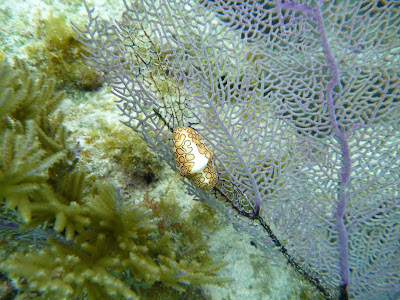


We left Hillbank at dawn. We loaded into a very small bus and took a two hour van ride to the Belize Zoo. The zoo is home to a variety of animals that have been injured, kept as pets, or rehabilitated in some way, and are not releasable into the wild. Some of the animals included the Harpy Eagle (who was a small boy), the five cats of Belize (jaguar, ocelot, margay, jaguarondi, and puma/cougar), and the tapir, the national mammal of Belize.
Some of us petted the ocelot, and others went into a cage with Junior the jaguar. Unfortunately, he was not feeling very friendly that morning and he ate the following students: Emily, Raza, Anneka, Colleen, and Julie. The college will send its condolences…..JUST KIDDING! But seriously, he did not want to cooperate so they did not get to pet him.
We then took a four hour drive to BFREE, the Belize Foundation for Research and Environmental Education (which is located on the edge of the Bladen Nature Reserve). On the way, we were lucky enough to stop at a local market in the capital of Belize, aka Belmopan. Dr. Tanner treated the class to some delicious fresh produce. We got a whole bag of ugly yet delicious oranges for only $1!
On the way, we passed many small villages with brightly colored houses. Hot pink never looked so good! When we finally arrived at the entry of BFREE, we were greeted with a 6.5mile hike through a pine savanna into the jungle. On the way we saw many Yellow Headed Parrots, and even spotted a tropical rattlesnake. The whole venture only took us 2 hours! When we finally reached the edge of BFREE, we had to cross a river….in the dark!
After a delicious meal, we all passed out. We awoke at 6am the next day to go on a bird watch. We spotted a number of warblers and even a Keel-billed Toucan (the national bird of Belize). Down by the lagoon, we saw a bunch of grumpy old men gossiping by the water. By grumpy old men we mean Boat-billed herons (they sound just like a bunch of grumpy old men moping away). We have seen about a hundred species of birds since we arrived in Belize (no exaggeration – we’re actually keeping track!). After breakfast we went on a two and a half hour tour of the area. We learned all about the different trees and animals; we tried all kinds of fruits on the path. For lunch, we had a delicious local recipe of cohune palm hearts with spices.
We were then given free time until dinner. Some students chose to go swimming in the Bladen river, nap (or just relax), or sight see. Some students even worked on homework (can you Belize it?!). After dinner William and Gato (his nickname) gave us a presentation on the Harpy Eagles and the environmental education components at BFREE. Then we went on a night walk where we saw a number of insects, an opossum, a kinkajou, click beetles (it glows!), and a Morlet’s crocodile swimming in the lagoon where we saw the Boat-billed herons earlier. We then went to bed at 9pm!
We got up super early today to go mist netting for song birds, however we got rained out. We also learned why we should always check our shoes in the morning before putting them on…one of the students (Raza) found a scorpion in his shoe! Instead of mist netting, we got to watch a BBC movie about the majestic Harpy Eagle. Then Dan (who jokingly refers to himself as “the bum biologist at BFREE”) gave us a presentation about gastropods (that means snails) and snakes. Several students held the tropical rat snake and a black indigo snake (don’t worry parents, these are both nonvenomous). Then some students went bat tracking, but they did not find any bats. However, they did encounter a beautiful Blue Crowned Mot Mot. After that, we walked along the riverbank to Oropendula nests. There were so many Oropendolas! Some students stayed behind and swam in the river.
Now we’re packing up to go to Calabash Caye out on one of the islands. Thankfully, we will be driving instead of walking the 6.5 miles back to our bus tomorrow morning.
- B’alam Witz Way (Brooke, Gabby, Anneka, and Robbie)
Pictures to come soon!









